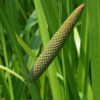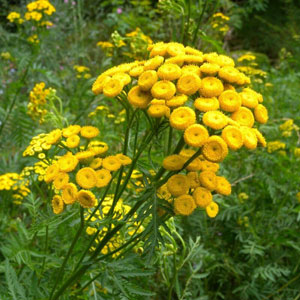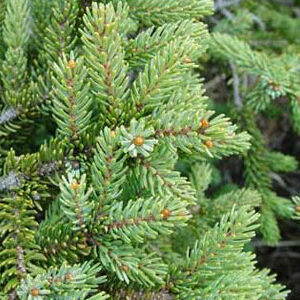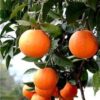Blue Tansy
20,00€ – 180,00€
Blue Tansy Essential Oil.
Tanacetum annuum produces leaves and flowers, from which the Blue essential oil Tansy Blue is extracted through high pressure, low heat steam extraction.
Blue Tansy, Moroccan Tansy Tanacetum annuum
Botanical family: Asteraceae (Compositae)
Other names: Often referred to as ‘Moroccan blue chamomile’ – but it is not a chamomile! Moroccan Chamomile is actually an entirely different species. It must not be confused with Tansy (Tanacetum vulgare) or Blue/German chamomile (Chamomilla recutita).
Description of the plant: Tanacetum annuum produces leaves and flowers, from which the Blue essential oil Tansy Blue is extracted through high pressure, low heat steam extraction.
Historical notes: The genius name, tanacetum, comes from the Greek word ‘Athanasia’ meaning ‘immortality’.
Tansy flowers appear in Greek mythology, but it is the Tanacetum vulgare, a related species, which creates a very different essential oil. According to the myth, Zeus ordered tansy flowers to be added to Ganymede’s drink to immortalize him as a cup-bearer to the gods.
The association with immortality most likely relates to the fact that tansy flowers do not wilt and can be easily dried up.
Plant part used to extract the oil: flowering tops of leaves and Flowers
Method of extraction: Steam distillation
Cultivation method: Wild harvest
Biochemical group: Monoterpene
Main chemical constituents: chamazulene, beta-myrcene, camphor, sabinene, beta-eudesmol, 3,6-dihydrochamazulene, beta-pinene, alpha-phellandrene, borneol, para-cymene, others
Colour: dark blue
Consistency: Viscous
Note: Middle
Aroma strength: medium
Perfumery note: middle
Aroma: herbaceous, complex, slightly sweet and floral, with camphoraceous undertones
When blending, special attention should be given to color issues that may arise (for example – discoloration if used in a white cream or lotion).
Therapeutic uses: Traditionally in aromatherapy treatments blue tansy is associated with the following therapeutic properties: analgesic, anti-allergenic, anti-anxiety, anti-asthmatic, anti-histamine, anti-fungal, anti-inflammatory, calming, cicatrisant, nervine, sedative
Qualified aromatherapists may use blue tansy essential oil for common complaints such as:
- nervous tension, stress and stress related conditions e.g. anxiety
- respiratory issues – asthma, hay fever
- skin care – eczema, irritated, sunburnt, blemished, inflamed skin and allergic reactions; in cosmetic recipes to help rejuvenate skin. Tansy Blue has a surprisingly sweet scent making it perfect for applications in skin care products and skin therapies.
- muscular aches and pains
- others
How we use it: Inhalation / Vaporization:
– Vaporize a couple of drops or use in an aroma inhaler for stress and stress-related issues such as anxiety or insomnia. You can use it on its own or try it blended with lavender, helichrysum, frankincense, bergamot, lemon or sweet marjoram – there are many combinations to try!
– Try in an aroma inhaler for allergy-induced asthma or hay fever.
– For hey-fever try in an aroma inhaler with lavender and a drop of eucalyptus
Skin applications:
– For stress related conditions try it diluted in a fixed oil (carrier oil) with lavender and use in massage or in a bath.
– For inflammatory skin complaints – dilute with some helichrysum and/or lavender in a fixed oil (carrier oil) or unscented organically certified base cream.
Blends well with: Most essential oils, though particularly Ravensara.
Cautions: Tansy Blue is generally non-irritating and non-toxic. Nonetheless, the preferred mode of use is external. It seems to display its strongest effects if its maximum concentration in a blend does not exceed 5%. Some also state that it is contraindicated with an endocrine imbalance in women. It should not be used in pregnancy. As it contains camphor, it is best avoided with epilepsy and children. Use for a limited period.
Safety considerations:
Tisserand and Young warn that blue tansy oil presents hazard (all routes of application) due to its possible drug interaction with drugs metabolized by CYP2D6. Reading Tisserand and Young’s full profile is recommended. [Robert Tisserand and Rodney Young, ‘Essential Oil Safety’ (Second Edition. United Kingdom: Churchill Livingstone Elsevier, 2014), 325-328.]
Some also state that it is contraindicated with an endocrine imbalance in women. It should not be used in pregnancy. As it contains camphor, it is best avoided with epilepsy and children.
Use for a limited period.

5,00€ – 38,00€









